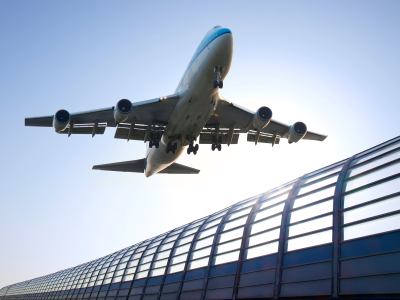Everything you need to know about freight forwarding services

If you’re buying or selling goods that have to go from A to B, you need to know about freight forwarding. There’s a world of jargon when it comes to importing and exporting goods – sea freight, air freight, international freight, cargo shippers, customs brokerage, duties and handling fees – just to name a few!
As your global freight forwarding and customs brokerage professionals, we’re here to dispel any confusion and get your freight forwarding needs sorted. Read on for everything you need to know about freight forwarding – then, let’s get your goods moving!
This may seem pretty straightforward – air freight, that’s just shipping using a plane right? But there are a few considerations when it comes to choosing the right method of transportation for your goods. First, think about what you are freight forwarding – if you are sending anything that is considered a dangerous good you will not be able to send it via plane. Dangerous goods are something that could be considered a risk to health, safety, property or the environment. You’ll also need to consider size – if you have a large shipment it may be more cost-effective to send via sea freight than air freight (more on that below!).
Air freight is a great option when you need to get goods to their destination quickly. Air freight can be anything from small packages and mailers to large boxes of 30kg to packed pallets of goods. Sending perishable or high-value goods or having express shipping requirements are perfect examples of air freight being your best option.
Sea freight is – you guessed it – freight forwarding via the ocean. Sea freight is a great option when shipping large goods such as shipping container loads of goods, civil construction and building supplies, industrial equipment or vehicles – or if you need to reduce your costs and longer lead times are ok. Goods can be sent via their own container or a shared container depending on the scale of shipment. Did you know a typical container ship can carry about 18,000 containers? That’s a whole lot of goods!
So, what time frames can you expect from sea freight? This completely depends on the starting and ending destinations, the sea freight company, the steps the goods go through prior to being loaded on the ship, customs clearance processes at the destination country if relevant, the location of goods within the ship – the list goes on. If you have any specific requirements for your shipment, talk to your freight forwarder and they will help you find the best solution to suit your needs.
Common sea freight jargon explained:
- FCL – Full container load. This is for when you require one or more full containers to send your goods.
- LCL – Less than container load. This is used when you want to send via sea freight, but your goods will be in a shared container with other shipments.
- RORO – Roll on roll off. This is when the goods are driven onto a ship and driven off again at the destination – think full trucks of goods or new vehicles being sent to a different country.
- DBS – Dry bulk shipping. This is used when the goods are loaded directly into the hull of a ship.
International freight
Shipping products between two different countries can be complex, not just because of different trade agreements and customs requirements but also due to the nature of whatever you are shipping. Here’s our breakdown of a typical international freight process – regardless of whether your goods are being sent via sea freight or air freight:
- Export Haulage. Getting your goods to the freight forwarding facility. Depending on the shipment this may be organised by the freight forwarder or you may organise this with a local courier service.
- Export clearance. Once the goods are at the freight forwarder for shipment, the goods will be processed for shipment. The customs declaration will be developed and submitted to the authorities prior to sending. This must be done by a certified freight forwarder or customs brokerage firm.
- Handling and shipping. The required method of shipping will be carried out as agreed – whether that is sea freight, air freight or rail freight between countries throughout Europe, Asia, Africa and the Americas. The goods will be checked against the documentation at various steps throughout the journey.
- Import clearance. Once the shipment arrives at its destination country, it will then go through the import clearance process. This is where the documentation and goods are checked by the local authorities for the all-clear to deliver.
- Import Haulage. This is the transfer from the import warehouse to its final destination – wherever that may be!
How can freight forwarding services help me?
As you’ve learnt above, air freight, sea freight and international freight can be complicated. If you miss any steps or forget any customs information your shipment could be severely delayed. We recommend engaging with a freight forwarder like us to discuss your distinct requirements. Not only does it save you time and money by finding the most effective freight forwarding services for your needs, but you’ll also be able to skip the worry and hassles that come with managing shipping logistics – so you can focus on your day-to-day business!
Since 2010, McLintock International has been helping individuals and businesses with importing, exporting and customs clearance. We’re passionate about shipping – and we love building partnerships based on trust.
Learn more about our freight services here, or talk to us about your freight forwarding needs today!
